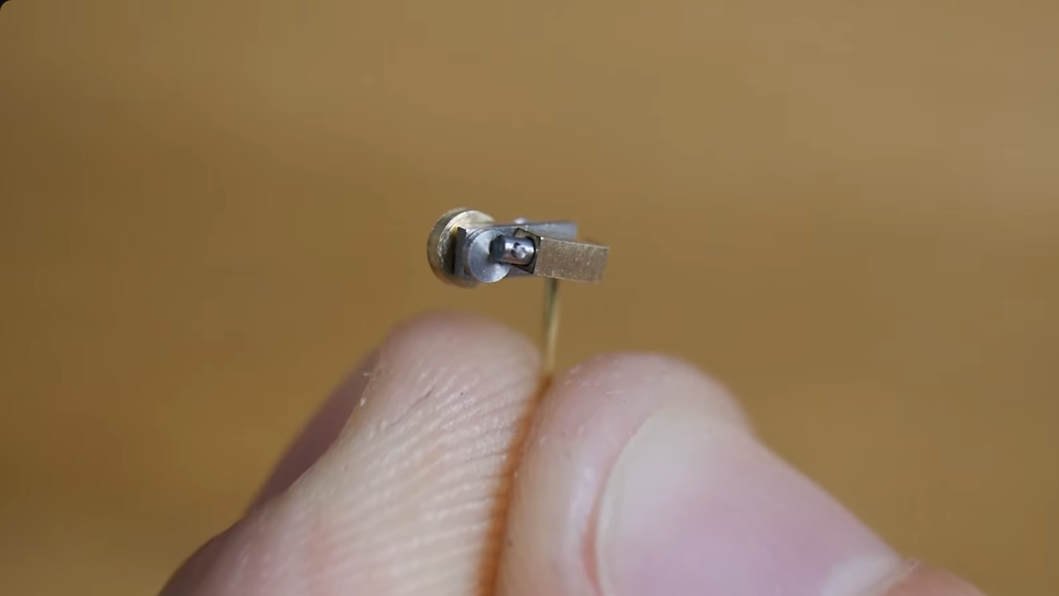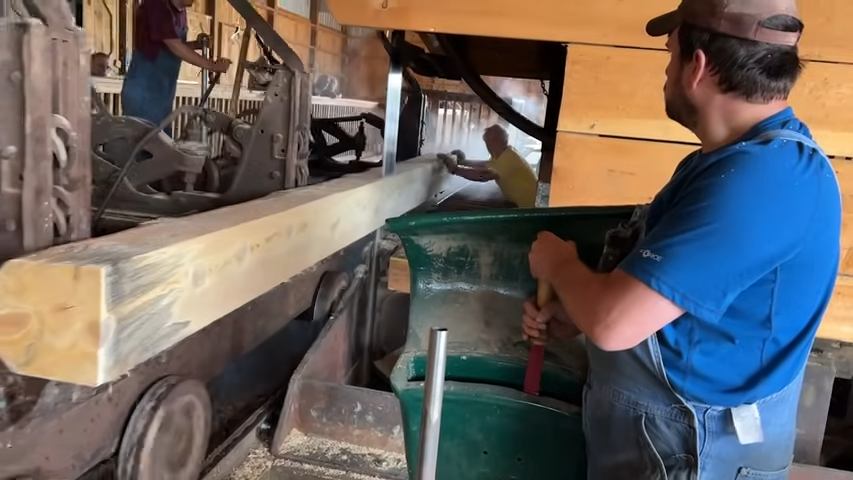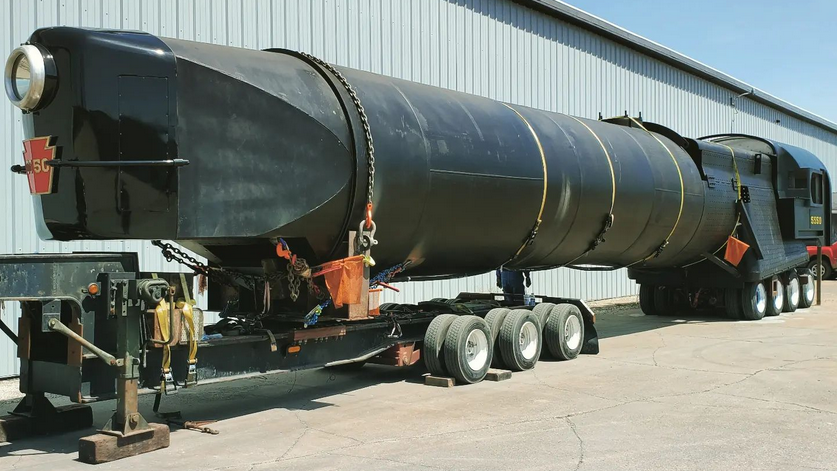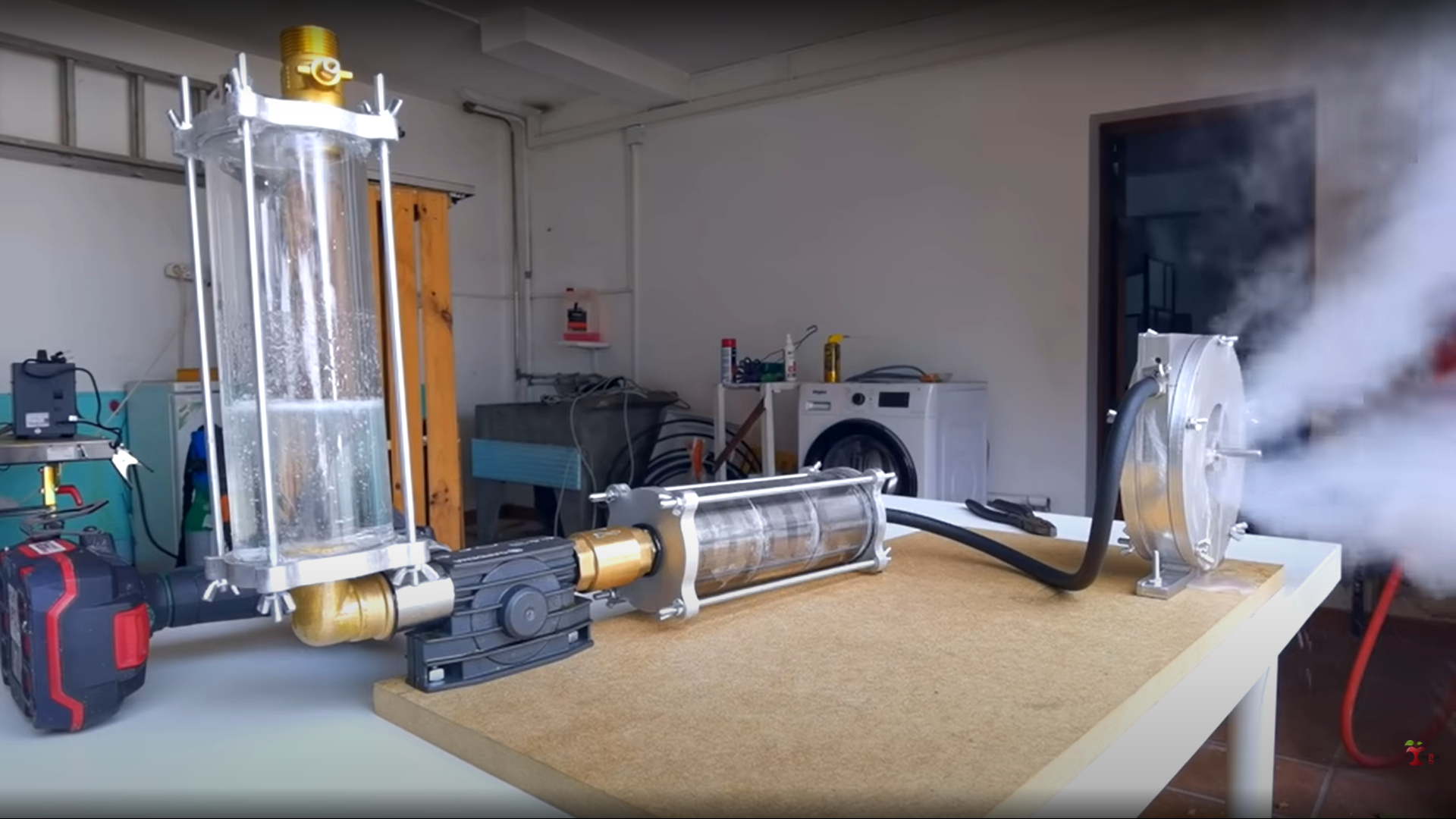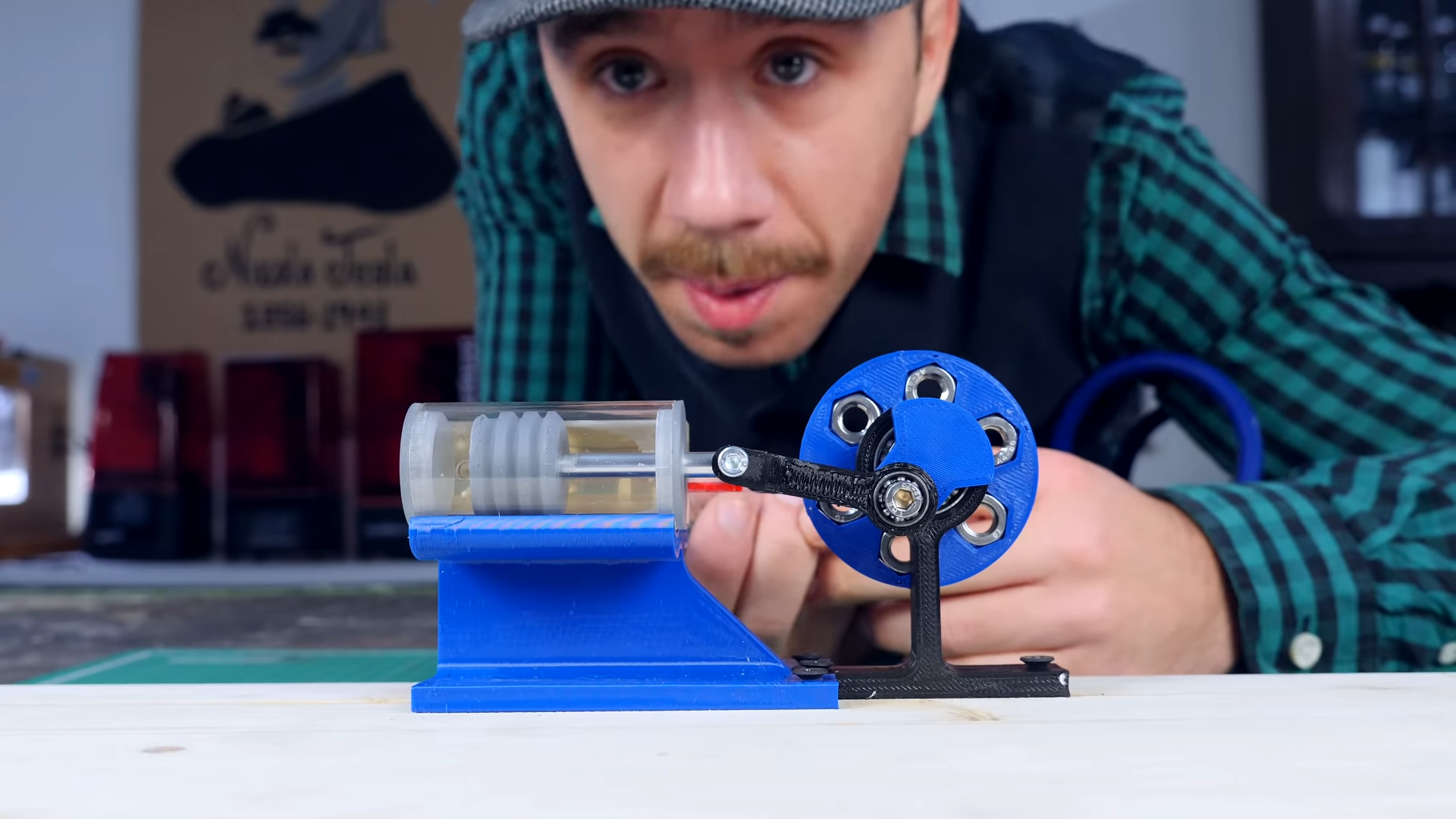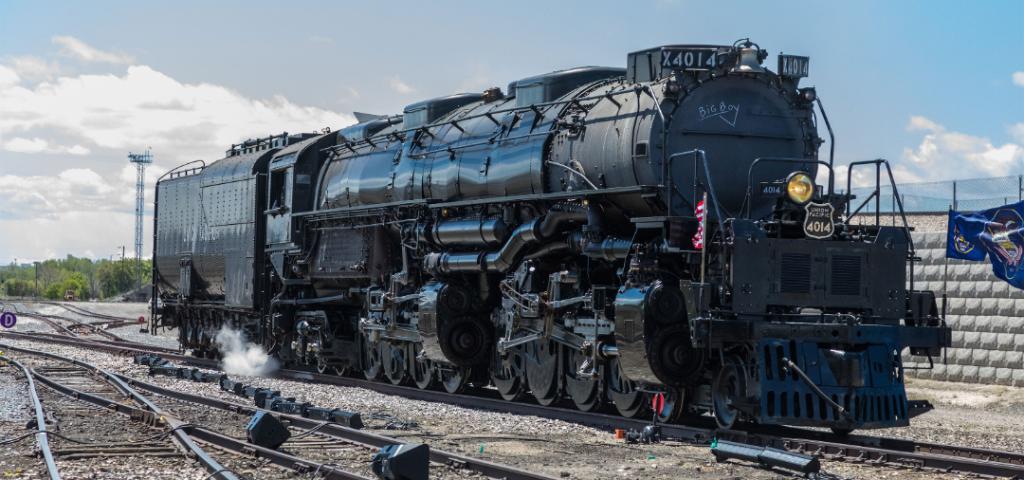3 Likes
#steamengine
One person like that
3 Likes
1 Comments
One person like that
One person like that
The Big Boy Steam Engine from Cheyenne Wyoming took a trip which included passing through Colorado. I went to Hugo Colorado to get some pictures and then over to Limon Colorado to just watch it pass by. Neat experience to see a 80 year old steam engine running down the tracks!
https://www.up.com/heritage/steam/4014/
#bigboy #steamengine #railroad #colorado #cowboy #photography #wildwest #oldwest
The Greek Steam Engine, The Aeolipile
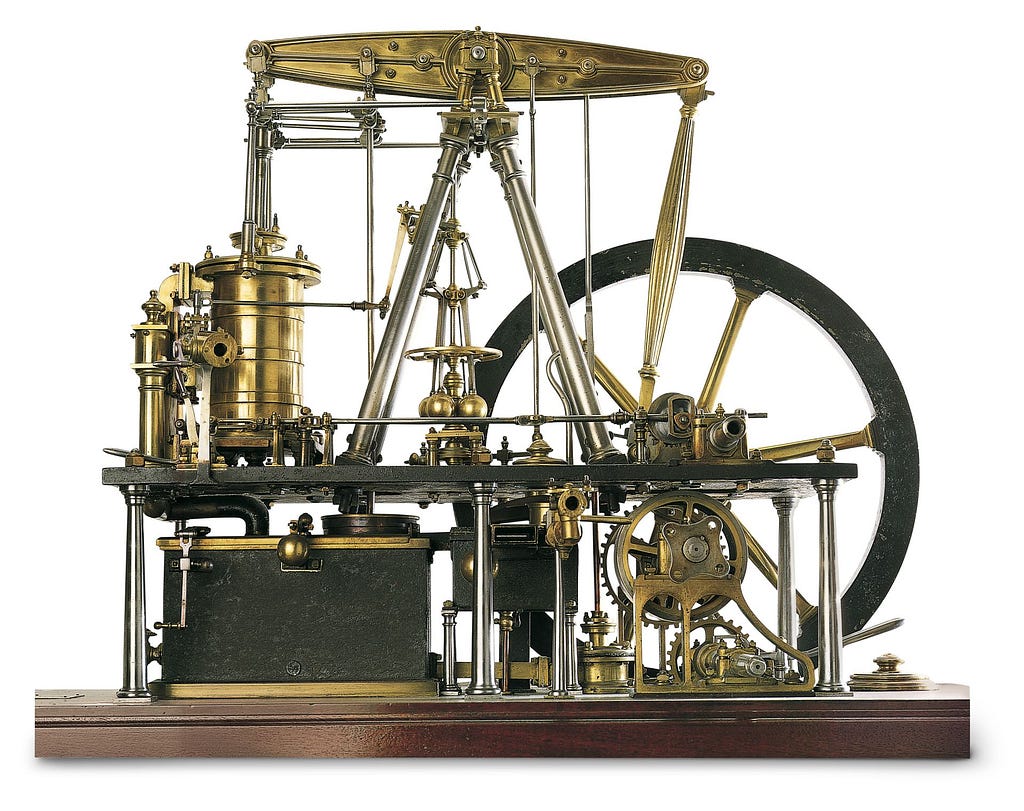
Why Could The Ancient Greek Steam Engine Not Power an Industrial Revolution?
Greek-Egyptian mathematician and engineer Hero of Alexandria invented the Aeolipile 10–70 CE, a primitive form of steam engine. Many believe that with improvement this could have triggered an industrial revolution.
 The James Watt Steam Engine
The James Watt Steam Engine
We all love alternative histories about what could have been. Many when they first learn about the primitive steam engine, the Aeolipile, invented by the ancient Greeks, think that an industrial revolution did not happen because the Greeks failed to see its potential.
Yet this could never have happened. I will try to explain why here, and hopefully give you a better idea of the nature of science, technology and development.
 Model recreation of the Aeolipile. Steam exits from the small brass arms causing the ball to spin around.
Model recreation of the Aeolipile. Steam exits from the small brass arms causing the ball to spin around.
The Aeoliphile was extremely inefficient and offered far too little power to be used as something to drive industrial machinery. But what if they just kept at it and improved it?
No, that would require developing something like a gas turbine, which is equivalent to suggesting that ancient Greeks could have made a fighter jet if they had just kept at it. That is just too technologically advanced.
Could the Greeks Have Made a Cylinder Based Steam Engine?
But what about a James Watt style steam engine? The kind where you have a piston moving up and down inside a cylinder. First of all that operates on a very different principle, which is not obvious at all to someone who has made an Aeoliphile. The James Watt steam engine derived from a atmospheric engine. These are not really what you think of as steam engines but more akin to vacuum pumps.
People had for a while began to understand the principle of pumps scientists had calculated to their astonishment that the atmosphere actually created a substantial pressure. This made them realize that if you created vacuum you could utilize the atmosphere to push things with great power. There is nothing about the Aeolipile which makes you realize this. It does not operate based on any understanding of vacuum.
 How the steam engine developed in stages.
How the steam engine developed in stages.
Thomas Newcomen in 1712 created an atmospheric engine, which was the precursor to an actual steam engine. The steam in it was used to push a piston up but not with a lot of power. Relatively low steam pressure was used. Instead it worked by injecting cold water into the cylinder filled with steam. This would cause the steam to condense rapidly into water, which would create a vacuum inside the cylinder. The atmosphere outside the cylinder would then exert a lot of pressure on the piston pushing it down. That push was what drove pumps in British mines for 50 years until James Watt began experimenting with improvements.
Without Watt there would have been no industrial revolution and making his steam engine proved extremely difficult:
The principal difficulty was in machining the piston and cylinder. Iron workers of the day were more like blacksmiths than modern machinists, and were unable to produce the components with sufficient precision. Much capital was spent in pursuing a patent on Watt’s invention. Strapped for resources, Watt was forced to take up employment — first as a surveyor, then as a civil engineer — for eight years.
As you can see, just having the idea of a steam engine by no means makes it possible to make one. It took many years and lots of money. It is extremely hard to make a large smooth cylinder in which a piston can move smoothly:
Through Boulton, Watt finally had access to some of the best iron workers in the world. The difficulty of the manufacture of a large cylinder with a tightly fitting piston was solved by John Wilkinson, who had developed precision boring techniques for cannon making at Bersham, near Wrexham, North Wales.
This should give some clues as to why the Greeks could not have made a workable steam engine.
The Technological Prerequisites the Ancient Greeks Did Not Have
Precision boring of holes was something that developed over hundreds of years in Europe in relation to cannon and gun making. It is a hard problem. However immense resources was thrown at this problem over hundreds of years because it had direct application in warfare which was important to all European states. If you could bore better holes in your barrels and cannons then you would have better weapons than your rivals.
However to get there required massive amounts of iron production. You needed to perfect this technique by making lots of guns and cannons. How was these quantities of cheap iron obtained? Through blast furnaces operated by water wheels. But these produced crappy pig iron. You needed water wheel powered trip hammers in other mills to turn this iron into wrought iron you could use e.g. to make a musket.
 A blast furnace is a large water wheel powered operation. These required access to rivers with steady water-flow through the year, which was rate in Greece and Italy.
A blast furnace is a large water wheel powered operation. These required access to rivers with steady water-flow through the year, which was rate in Greece and Italy.
This technology was not widely used in the Ancient world. Romans to my knowledge did not have blast furnaces, and if they did they could not have had them in large numbers. The Italian peninsula is poorly suited for water wheels. The same applies to Greece. Britain, especially the Manchester era is much better suited. Britain was well suited for canal digging so that coal and iron ore could be transported to cheaply.
And perhaps more importantly the Greeks and Romans did not have gunpowder, cannons and guns. This was what drove the development of the technology to create smooth straight bores. This is what you need to create the cylinders for the steam engine.
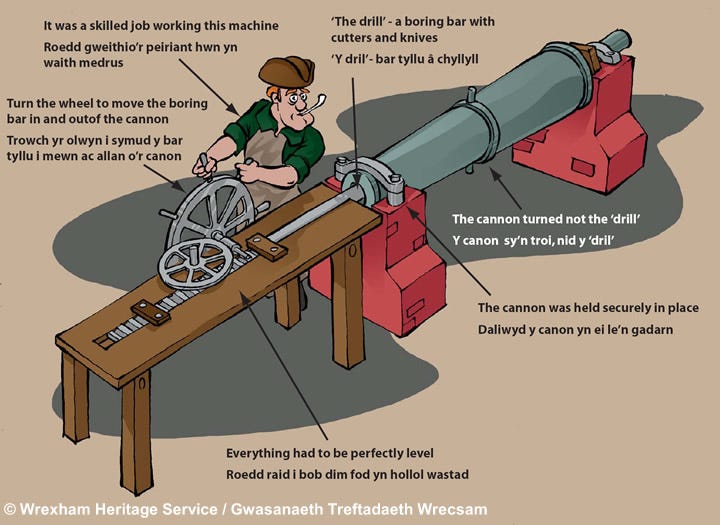 John Wilkinson cannon boring machine. Without this technological prerequiste you could not make smoot cylinders for your steam engine.
John Wilkinson cannon boring machine. Without this technological prerequiste you could not make smoot cylinders for your steam engine.
Britain with its many canals, lots or iron, coal and water wheel powered blast furnaces could crank out lots of cheap iron which could go into weapons making which was necessary to perfect this technology. It took hundreds of years to go from primitive cannons before they could make muskets e.g. Developing this kind of metal working is a time consuming process.
Then we have the need to create intricate mechanical mechanisms. This developed from making the firing mechanism of muskets as well as for making mechanical clocks. None of these technologies existed in the Greek and Roman world.
 The firing mechanism of a flintlock musket. This kind of intricate iron work was perfected due to the importance of gunpowder weapons, unknown in the Greek-Roman world.
The firing mechanism of a flintlock musket. This kind of intricate iron work was perfected due to the importance of gunpowder weapons, unknown in the Greek-Roman world.
Creating hight quality wrought iron or steel is a very hard process to master which took very long time to perfect. Without quality steel and quality made cylinders, a steam engine would risk blowing up and killing people. This happened repeatedly during the industrial revolution when understanding of science and mathematics was far beyond that of the Ancient Greeks.
Greeks Lacked the Science and Mathematics
Even in the times of James Watt, thermodynamics which is crucial in making steam engines was in a very primitive stage. But at least they had discovered and understood vacuum which was crucial first step in making the atmospheric engine. The first vacuum pump was made in 1654 by Otto von Guericke. Hero actually tried to create vacuum but never succeeded. This stuff was simply hard and required many great minds. Thought and experiments with vacuum was going on for a long time before people actually managed to measure it and prove its existence.
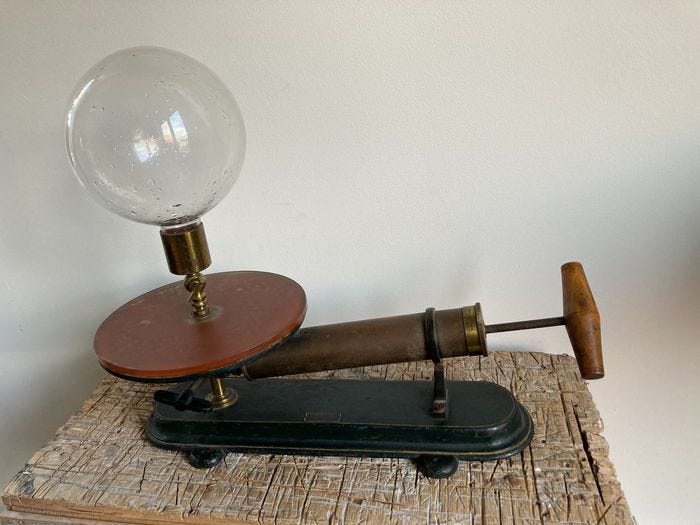 Early vacuum pump. Developing the first steam engines required developing and understanding of vaccum.
Early vacuum pump. Developing the first steam engines required developing and understanding of vaccum.
Keep in mind that the Steam engine got invented after the minds of Isaac Newton, Blaise Pascal, Kepler, Christiaan Huygens and many other great scientists had advanced scientific and mathematical understanding considerably.
A practical steam engine required a way to regulate its motion to keep it constant otherwise you cannot do actual industrial work. Windmills has the same problem which is why Christiaan Huygens invented the centrifugal governor, which James Watt used in his steam engine. That Greeks and Romans should have decided “We need a steam engine” and then invented all this stuff in succession seem highly implausible.
Innovation Requires Numerous Sources of Inspiration
What I hope to show here is that to make something of profound importance like a steam engine you need to utilize innovations from a vast selection of areas. James Watt relied on vacuum pumps, the smooth boring techniques from making high quality cannons, cheap iron from water wheel powered blast furnaces and the centrifugal governor used in windmills.
 Centrifugal governor used to steady the flow of steam to keep the speed of rotations stable.
Centrifugal governor used to steady the flow of steam to keep the speed of rotations stable.
This is pretty typical. Gutenberg’s printing press used a screw press from olive presses. The types used for the printing was made using a hand mould which was likely inspired by the hand moulds which had been used for a long time to make musket bullets.
It is very unlikely for one person to invent all these difference pieces of technology themselves. They need to see solutions used elsewhere and combine these to make their invention work. Thus you can see how inventions derive from a complex web of other inventions and insights often in apparently unrelated fields or industries.
Thus technology doesn’t just forge ahead in one branch. Technologies are related to each other. Thus the idea that ancient Greeks could develop a James Watt style steam engine without advanced guns, wind mills, machining tools, improved mass production systems for iron production etc is rather unthinkable. It is a bit like thinking a society could make a space rocket before having created trains, cars and calculators.
Innovation doesn’t happen in isolation. Innovation feeds of a multitude of other inventions and insights.
2 Shares
One person like that
3 Likes

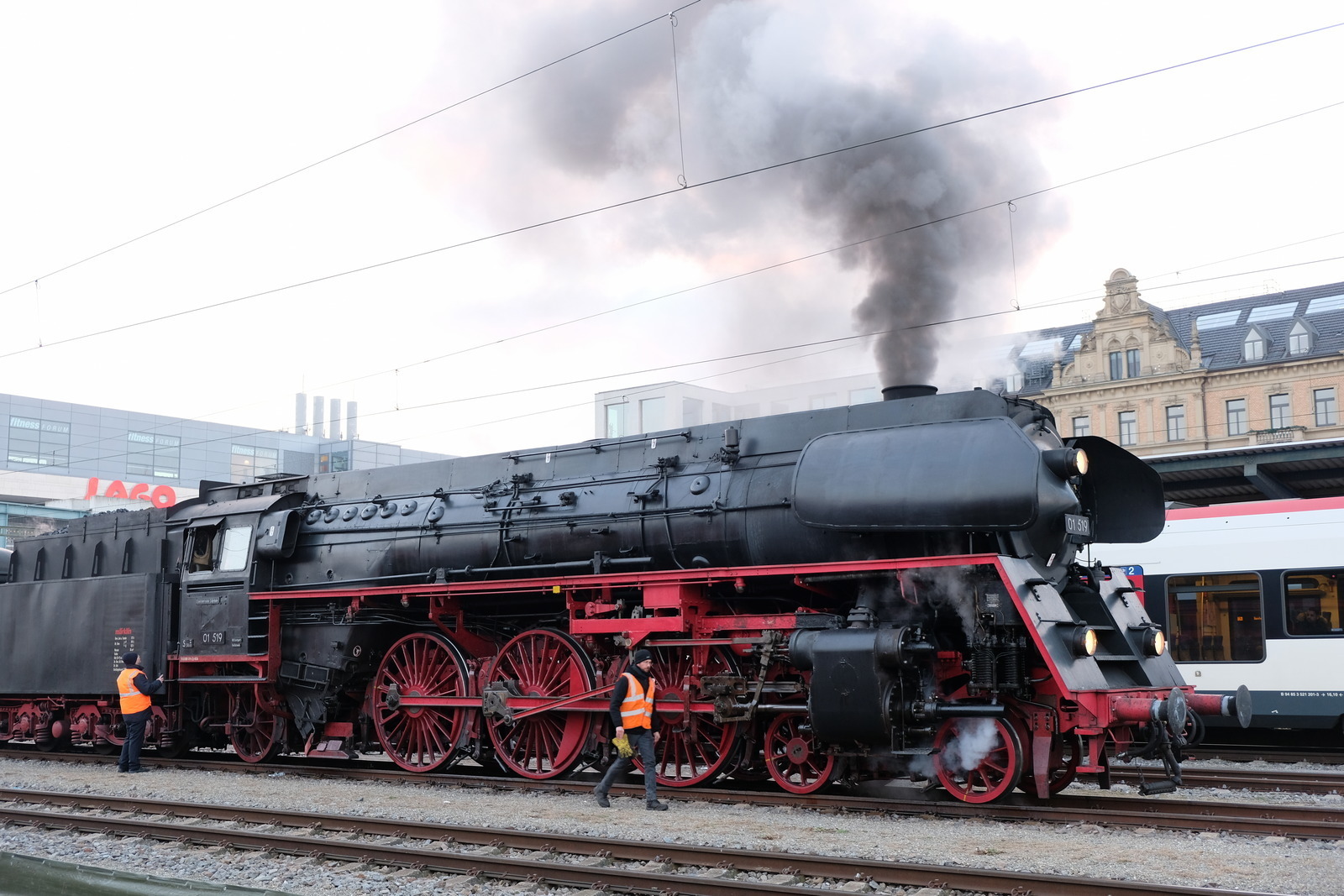
Dampflok in Konstanz
Gestern war ein Dampfzug in Konstanz und ist dann bei der Rückfahrt über die Rheinbrücke gefahren - ein Foto, das ich schon seit Jahren mal machen wollte (allerdings hatte ich mir das immer bei Tag vorgestellt :D ).
Mehr Fotos: https://www.jenseitsderfenster.de/2018/12/16/dampflok-in-konstanz/
#dampfzug #dampflok #fotografie #photography #konstanz #steamengine #train #bahn #retro #mywork #myphoto #foto #photo
One person like that
1 Shares
